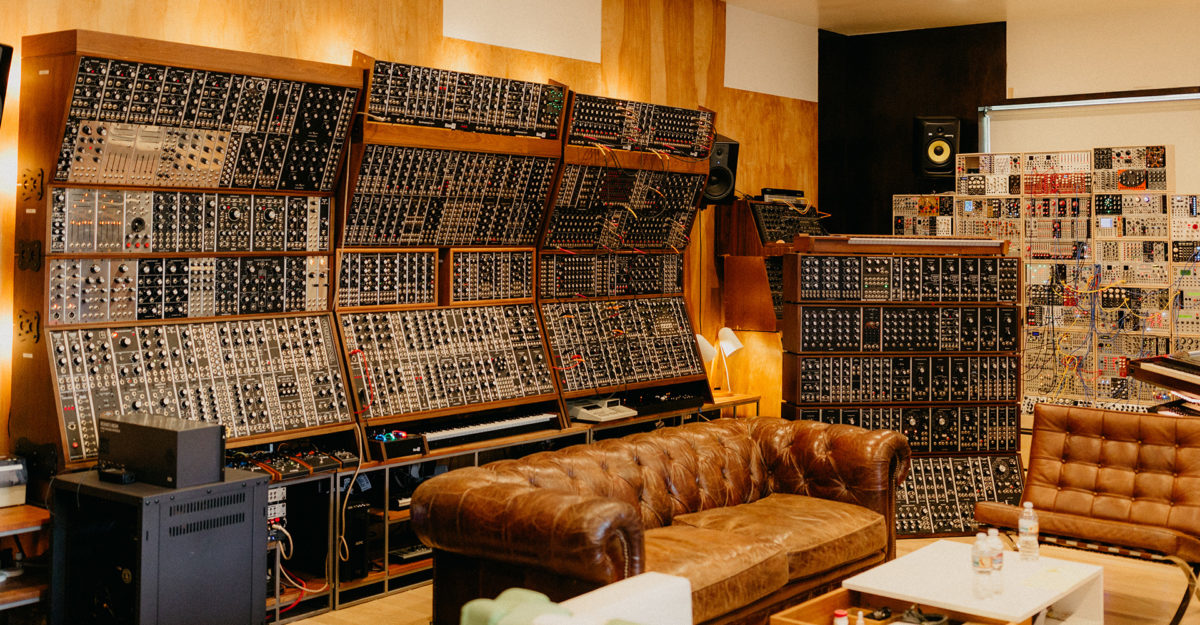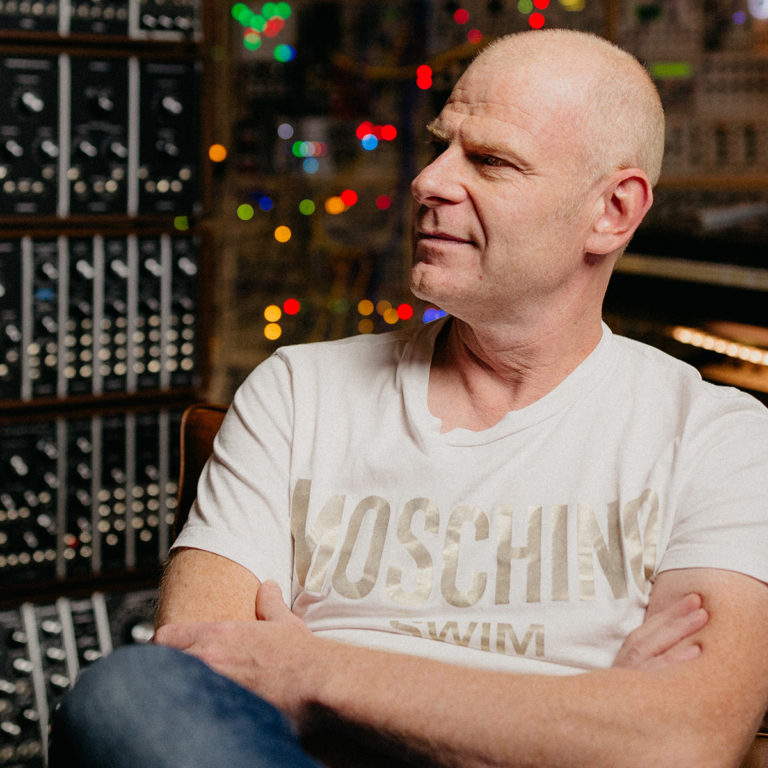If you are not already familiar with Tom Holkenborg, all you need to do is scan the credits of recent Hollywood blockbusters. Tomb Raider, The Dark Tower, Mad Max: Fury Road, Batman vs. Superman, and Kung Fu Panda 2 – it’s a line of achievements that most aspiring soundtrack producers can only gaze up at in longing.
But there’s even more. Tom’s other alias is Junkie XL – also known as JXL, who was responsible for the popular Elvis remix, A Little Less Conversation. You couldn’t leave the house in 2002 without hearing its infectious, old-meets-new groove. But there’s far more to Holkenborg than that.
Despite the opportunity to follow up the international megahit with a string of others, Tom decided otherwise. He packed up his studio and moved to LA to pursue a career in soundtrack composition. So what’s life like right now for the in-demand maestro of the silver screen?
“Well, I got up around three, studied violin for an hour, and after that, I started mixing away on a new project I’m working on,” says Tom from his Los Angeles studio.

I knew you had some background with keyboards and pianos, but I didn’t know you played violin as well…
Actually this is recent – several weeks ago I picked up the violin and the cello. I wanted to really start learning them and understand the instruments better. It’s been a great but very painful process.
So you want to know it to write more realistic parts in the scores – what have you learnt so far about that?
I’m a guitar player, so normally when I write for strings, I check if they make sense on a guitar – and if they do, usually a violin player can easily play it. But you have to understand, this little section here [right up after the neck meets the body of the violin] plays about an octave and a half, and we write blazingly fast riffs for the violin in this small section.
If you’re a violin player, you have to extend your arm completely around the body to get there. Elsewhere it’s all easy – it’s pretty much like a guitar so you can pretty quickly get around, but as you move towards the bridge…
I already had massive respect for these players anyway, but now I’m just like, “Holy shit guys, how do you put up with me?”
I guess you still do a lot in software-only, too? Do you use orchestral libraries when you’re writing in software?
About 60 to 75% of the software I have is custom-made; the other 25% I rely on existing stuff that’s out there. But I always treat them. For me, there’s a lot of work to be done with a library that comes ‘out of the box’ – I take the plug-in apart, remix the samples and put it back together… I process the returns heavily using Cubase.
Sometimes I even play the instruments myself – when it’s drums, guitars, basses, synths or sound design, that’s all completely made in-house. For something that’s more elaborate, you need help with simple editing and potentially scripting, too.
I recently deep-sampled a flamenco guitar. We just did the whole thing here, chopped it up, mixed all the samples, built the initial patch in KONTAKT, and started playing with it, adding things until we were super-happy with the instrument.
Do you find it saves a lot of work when you actually get to the writing stage?
Yes, you have to anticipate things – sometimes up to a half a year ahead. For instance, I know the four movies that I’ll be working on until March next year; I know exactly what types of instruments I need. There’s one instrument I’m going to build this month, but I don’t need it for ten months. When I finally get into the writing process, I won’t be stressing that I don’t have the sounds I need.
You’ve recently released a pack – Desert Dystopian – which takes its inspiration from your work for film. It’s an evocative title.
Purely musically speaking… the soundpacks I’ll release this year will have themes that are very closely to certain films I’ve done. This one very much relates to the score of Mad Max – it’s very over-the-top, very aggressive, very bold and not all that subtle. People really seem to be picking up on it.
I picked one BPM, and I picked one key, which means people can mix and match.
Is it hard for you to get back into the ‘mindset’ of something you made a while back in order to get a consistent tone and feeling for the pack?
No, for me that’s easy – I make music that’s close to my heart; I don’t make music to try to be someone else. It’s very easy to switch that on because I know what I am. For me, it’s very easy to go there – the pack is an aspect of me.
There’s not that much orchestra in it, and the orchestral parts that are in it are very heavily treated – the strings and brass are very heavily ‘designed’. There’s a lot of drums and percussion in there that are ‘groups of people’ playing at the same time… in this case me, and I’m pulling a lot of mix tricks like compression and distortion to get it really beefy. But there’s a lot of synthesized stuff there.
Your history with synths seems pretty special, actually. I read that you originally worked in a music shop, back in the days when analogue was out-of-fashion and really cheap.
Yeah, I worked in the store from about 1982 until the 90s. I was basically the first to set up a sort of ‘MIDI Corner’ in a music store. This is the year when the Atari came out with the 1040 ST, the DX7 was on the way, the Juno-106… great digital things. This was the time period where no one really knew what MIDI was, but I dove into that whole matter and got really good at it.
This was a small music store in the north of Holland, and within no time, we grew to a very sizeable serious music store, because we had the knowledge about MIDI and synthesizers. I was so good at my job that people really wanted to get rid of their old analogue synthesizers – the ones that we now consider as real crown jewels.
People would come to the store and I would do a demo of MIDI: the DX7, the D-50, the Korg M1… They’d say, “This is so great, I want it, but I just have a Memorymoog, a Korg MS-20 and an MS-10.” I’d talk to my boss and he’d say, “I don’t know what to do with that junk! Nobody wants that stuff anymore.”
I’d come back out knowing that they wanted to buy eight grand’s worth of stuff, but that we could only give them 150 for the whole lot. He didn’t want to deal with those machines – but we had a deal where I could buy them for the price we’d paid for them. I kept buying all those synthesizers throughout that decade, and that’s one of the reasons I have such a vast collection of vintage instruments.

You still have them?
Yeah, my room that I primarily work in is also the room featured on all the Studio Time tutorials [Tom’s series on YouTube where he exposes the techniques and tools behind his work]. I take care of them really well – they’re constantly being restored and fixed, and I make sure that they sound great but also that they look great.
Do you still get to use them in soundtracks? Once upon a time, if you said “Film Soundtrack” to somebody, they’d think strings and brass, but times are changing…
Yeah, that goes in waves. There was a wave in the 80s where you had Beverly Hills Cop, the first Top Gun… and then it disappears and comes back again. Synths and electronic sounds have been here in film scoring at least for the last ten years, but now synths are also being used in their very purest forms – not even with an orchestra, it’s just the synths.
I did a documentary two or three years ago that was 100% just synths, and I use them all the time. I use them as audio instead of with MIDI, since it’s not very practical, but I figure out the parts, record the audio into my sequencer and then chop it up.
I use a lot of virtual analogue plug-ins, too – when everything is perfect, I go into two or three weeks of production and we swap out the softsynths with the real ones and play around with it to add more character.
Any exceptions? Do any softsynths manage to make it into your work?
It’s also not always the case that analogue synths sound better than the softsynth versions – there’s many instances of FM8 that basically stay in Cubase the way that they are, because it’s simply too much work to recreate a patch like that on a DX7 or DX1. Sometimes the character of the plug-in is what you want: you don’t want to go old-school.
There’s also loads you can make with REAKTOR, but also MASSIVE, which has always been one of my favourite synths. There’s no analogue equivalent out there, so things made in MASSIVE are never actually replaced.



















